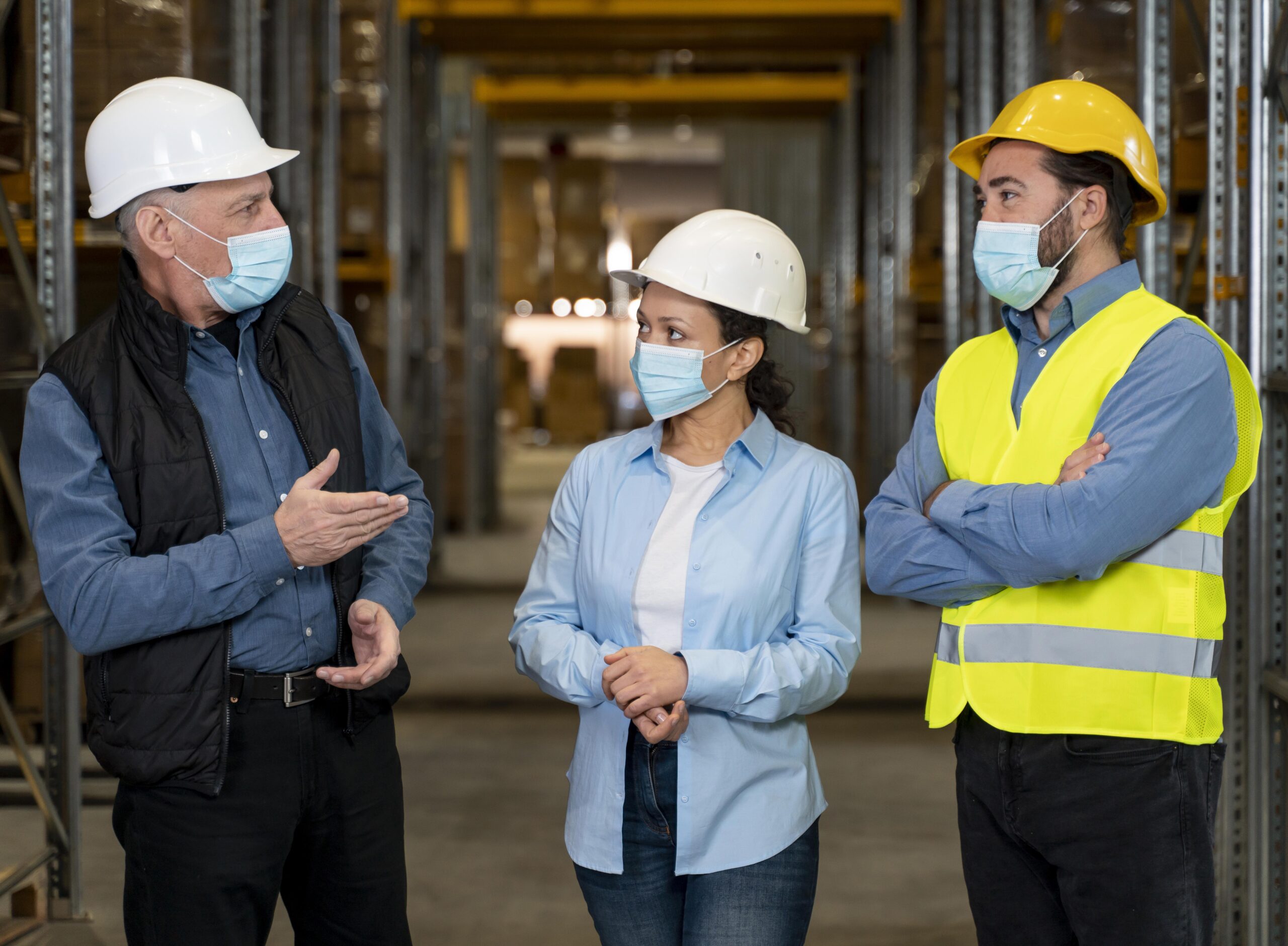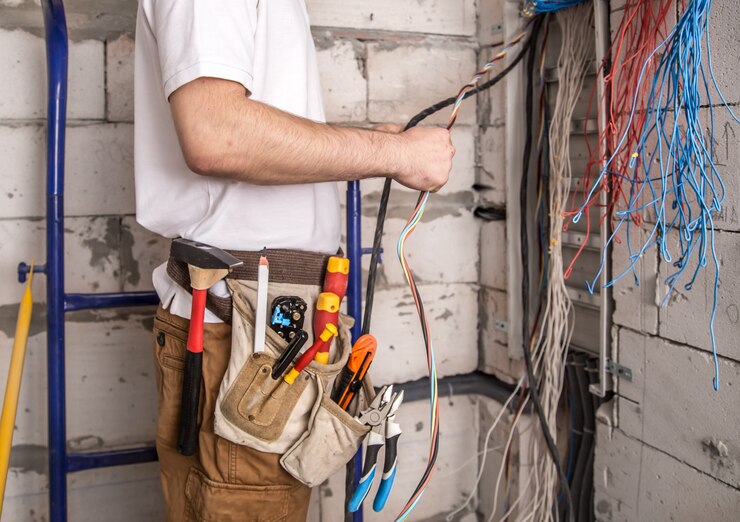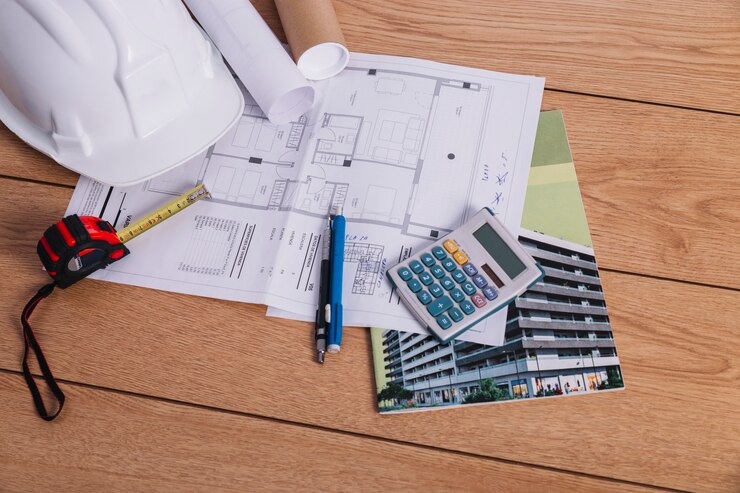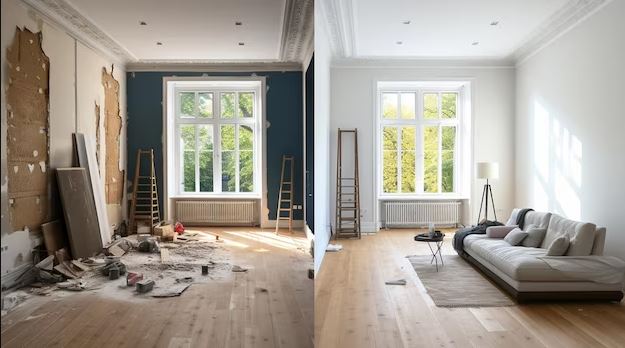Must-Know Regulations for Condo Renovation in Singapore

Sprucing up a condo in Singapore can really make it feel like home, tailoring it to personal taste and requirements. But there’s a catch – strict rules are in place. These ensure everyone stays safe, follows the law, and keeps the peace with neighbors. Getting familiar with these guidelines is key before starting any makeover plans. It helps dodge legal headaches, fines or just plain stress.
Understanding the Approval Process
Role of the Management Corporation Strata Title (MCST)

Before kicking off a condo renovation, it’s crucial to get the green light from the Management Corporation Strata Title (MCST). To do this, one needs to hand in detailed plans of the renovation. This includes what work will be done and any other papers MCST asks for. The whole approval thing usually takes a few weeks. During this time, MCST might ask for more info or suggest changes to your plan. If they say no at first, don’t worry! There’s still a chance through an appeal process. But remember: strong reasons are needed to make them think twice.
Seeking Approval From Relevant Authorities
Getting the okay for renovations isn’t just about MCST approval. Depending on what’s being done, it might also need a thumbs up from different government groups. The Building and Construction Authority (BCA) checks out changes to structure. Meanwhile, the Urban Redevelopment Authority (URA) keeps an eye on how things look outside and if they fit with heritage rules. Then there’s the National Environment Agency (NEA). They make sure everything is cool with environmental health and safety laws. Yes, getting all these approvals can take a while but sticking to legal stuff matters.
Hiring an Approved Renovation Contractor
Singapore keeps a roster of vetted renovation contractors. These pros have the right experience, solid finances, and follow building rules to the letter. Choosing one from this list means renovations will be up to code, dodging any legal headaches or fines. On the flip side? Going with someone not on that list could spell big trouble – think delays and penalties.
Understanding the Scope of Allowed Renovations
Knowing the difference between structural and non-structural makeovers is key. The first type can mess with a building’s stability, so it needs stricter approvals. Non-structural updates like painting or new cabinets are usually less of a hassle. But even these simpler jobs might need special okay if they’re big changes or involve banned stuff. Checking in with the MCST and other officials helps figure out what’s cool to do in a condo.
Noise Control Regulations
Permissible Hours for Renovation Works

To keep the peace in the neighborhood, there are specific times for noisy renovation work. From Monday to Friday, it’s okay between 8:00 AM and 6:00 PM. On weekends, we cut back on those hours so everyone can relax a bit more. And remember, no noise is allowed on public holidays or outside these set times!
Notifying Neighbors
Letting the neighbors know about planned renovations is both thoughtful and usually required. The heads-up should include how long it’ll take and what’s happening. This way, by being open and ready to address any worries, everyone can get along better during the process.
Types of Permissible Noise Levels
Regulating noise levels means using science to check if things are too loud, based on rules that change depending on where someone lives. These rules help keep the peace for everyone around. There’s a cap on how noisy gadgets can be and sometimes, getting permission is needed for really loud equipment. It shows why sticking to these standards matters so much.
Impact on Neighbours
Being mindful of neighbors is key during home makeovers. Planning smartly helps keep the peace. This means using ways to cut down on noise and picking work hours that won’t annoy others too much. A heads-up to those living nearby goes a long way in keeping good vibes in the neighborhood.
Resolving Disputes Amicably
Sorting out noise issues quickly and openly is key to keeping the peace in any community. Talking things through often results in changing how renovations are done. This shows just how important it is to compromise and communicate well when solving disagreements.
Penalties for Non-Compliance
Breaking noise rules can lead to big fines and trouble for operations. It shows how crucial it is to follow the rules. If not, projects might get delayed, and there’ll be a need for fixes. This highlights why sticking to noise control steps matters so much.
Waste Management and Disposal Regulations
When it comes to fixing up places, be they homes or businesses, dealing with trash is a big deal. It needs smart planning and following the rules closely. This section explores what kind of junk renovations create, how to get rid of it right, thinking about the planet, and what happens if things aren’t tossed out properly.
Types of Waste Generated During Renovation
- Construction debris piles up fast during renovations. Think wood, metal, concrete, plaster, and tiles – they’re the main culprits. Separating them out for recycling or safe trash disposal is key to keeping our planet happy.
- Renovating can bring surprises, like finding lead paint, asbestos or old chemicals in the building materials. These need careful handling and disposal to keep everyone safe and protect the environment.
- During renovations, lots of stuff like doors, windows, and fixtures can get a second life or be recycled. Spotting these items and keeping them out of landfills saves resources. Plus, it cuts down on dumping fees too!
- General Waste Management covers all the everyday trash that’s not dangerous or doesn’t fall into specific types. Think things like packaging and random bits of rubbish. Getting smart about handling it – by sorting and squishing it down – can really cut back on how much there is to deal with.
Proper Disposal Methods
- Segregation of Waste: Kicking off smart trash handling means sorting it right where it starts. It’s key to tell apart stuff that can be recycled, reused, or is just plain hazardous from what needs to go straight to the dump. Doing this cuts down on harming our planet big time.
- Approved Disposal Facilities: Waste from renovations needs to go to the right places, ones that can deal with it properly. Stuff like hazardous materials? They need a special spot where they can be made safe and not harm anyone.
- Scheduled Disposal Timings: Different areas have their own rules and times for getting rid of trash. Following these schedules makes sure the waste is dealt with properly. It also helps avoid fines for not following the rules.
- Fees and Charges for Disposal: Getting rid of waste from renovations, especially the risky stuff, usually costs money. The price changes depending on what’s being tossed and how it’s done. It’s crucial to think about these expenses early on when planning a renovation budget.
Environmental Considerations
- Reducing Waste Generation: Cutting down on waste starts with making less of it. Plan carefully, order materials that fit just right, and choose renovation techniques that keep trash to a minimum.
- Eco-friendly Materials and Practices: Choosing materials that can be recycled, come from sustainable sources, or leave a smaller mark on the environment is key. Going for deconstruction over demolition helps save materials so they can be used again.
- Contributions to Sustainability: Handling trash smartly when fixing up places helps the planet big time. It cuts down on landfill stuff, saves resources, and keeps pollution in check.
- Certifications for Green Renovations: Projects going all-in on strict waste management and green habits can earn eco-certifications. These badges of honor do more than just show off a project’s love for the planet; they might also bump up property values.
Penalties for Improper Disposal
- Fines and Penalties: Not following the rules for throwing out trash can lead to big fines. These hefty penalties aim to stop rule-breaking and push for proper waste handling.
- Environmental Impact: Tossing out renovation waste the wrong way can really mess up the environment. It leads to pollution and hurts animals too. Stuff like hazardous materials? They’re bad news for water and soil health.
- Case Studies of Improper Disposal: Many cases show that dumping waste the wrong way has caused big harm to our environment. It also made those responsible pay hefty fines.
- Tips for Compliance: Keeping up with local rules, thinking about trash plans from the start of a remodel, and teaming up with official disposal firms makes sticking to laws easier. This way, avoiding fines is more likely.
Safety and Insurance Requirements
Safety Regulations for Workers and Residents

During renovations, it’s a must for both workers and residents to gear up in safety equipment. Think helmets and those bright vests you can spot from miles away. Safety rules mean checking the site often and sticking to building safe practices. Also, everyone should know where emergency plans are posted – including who to call right away if something goes wrong. Plus, training sessions? Super important so that everybody knows what’s up with staying safe and how to react when emergencies hit.
Insurance Coverage for Renovations
When tackling renovation projects, it’s crucial to have solid insurance. This includes coverage for any mishaps and property damage. The size of the project and possible risks should guide how much insurance is needed. To file a claim, one must record any damages or losses then report them in detail to the insurance company. Both contractors and subcontractors need their own policies too. This ensures accidents or damages on-site are covered.
Fire Safety Regulations
When fixing up a place, it’s crucial to use materials that are fire-safe. This helps dodge any risky situations. Part of being safe means putting in smoke alarms and keeping escape paths open and clear. Working together with the local fire safety folks makes sure everything is up to code, boosting overall safety measures. Also, there needs to be an evacuation plan in place. It’s important for everyone living there to know this plan well through regular drills and clear communication.
Handling Accidents and Emergencies
When an accident happens, the first step is to make sure the area is safe and give quick help. Every accident needs reporting to the right people and writing it down for insurance reasons. Figuring out who’s at fault comes after looking into things and checking if safety rules were followed. To stop accidents from happening again, doing regular safety checks helps a lot.
Restrictions on External Changes
Facade Alterations

Rules for changing a building’s front keep its look consistent and honor its design. To make changes outside, getting the okay from those in charge is a must. They check how these tweaks might change the building’s overall vibe. Examples of past approved changes can guide new projects.
Balcony and Window Regulations
When tweaking balconies or windows, sticking to safety and structure rules is a must. Any big changes need the green light first. This makes sure they don’t mess with the building’s stability. It’s also key to think about privacy so as not to crowd into neighbors’ space. Plus, these updates should keep the outside look of the building nice and unified.
Air-Conditioner Installation and External Units
There are strict rules for putting in air conditioners. They make sure the outside parts don’t mess up how things look. Keeping noise down and making sure everything looks good is key to keeping everyone happy. Also, there’s a big focus on safety and upkeep so that these setups aren’t dangerous.
Landscaping and External Decorations
Landscaping rules help everything look good together and make the area around buildings nicer. There are limits on outdoor decorations to keep a consistent style. Getting approval for changes makes sure they add something positive to shared spaces. Keeping up this shared style is key for living together in harmony.
Parking and Accessibility During Renovation
Parking Regulations for Contractors

Contractors need to get parking permits for their trucks. They should park in specific spots to keep things smooth. When planning deliveries, it’s important to think about the residents and traffic. The goal is to avoid causing too much trouble.
Access to Common Areas
When fixing up places, it’s key to plan who gets the common spaces. This way, no one steps on each other’s toes and everyone can get where they need to go. There are rules during these projects so that both work needs and resident access find a happy middle ground. Making sure everyone can move around easily is top of mind, with adjustments made when needed.
Lift Usage for Renovation Purposes
Rules are in place to keep elevators safe from harm when buildings get a facelift. They’re used on a tight schedule to cut down on the hassle. Sometimes, there’s a fee for using them, which covers fixing and upkeep costs. Plus, safety measures make sure both workers and folks living there stay out of danger while stuff gets moved around.
Handling Deliveries and Large Items
Coordinating delivery times helps keep things smooth for residents. Limits on item size and weight protect our infrastructure. Using service lifts and loading bays, we can move big items without breaking community rules.
Compliance With Electrical and Plumbing Codes
Electrical Wiring and Installations

When fixing up a place, it’s crucial to get the electrical wiring right for both safety and working order. Getting the green light on electric work means going through checks and getting certificates. Bringing in certified electricians makes sure everything is up to code and done professionally.
Plumbing and Water Works
Changes to plumbing need rules to keep the system safe and water clean. Big plumbing jobs must get a thumbs-up for health and safety. Saving water is key in updates, so certified plumbers are a must-have.
Gas Installations and Safety
Gas safety rules are tight. Every gas pipe job needs a thumbs-up first. They do checks and leak tests to make sure everything’s safe and no leaks sneak through. Plus, there are clear plans in place for dealing with gas leaks – all to keep people and properties out of harm’s way.
Energy Efficiency and Sustainability
Renovations now lean towards energy-saving designs. This cuts down on both environmental harm and utility bills. Using eco-friendly materials is a plus, with perks for going green in upgrades. Such steps not only boost the property’s worth but also pave the way for a greener tomorrow.
Managing Renovation Timelines and Budgets
Setting Realistic Timelines

When planning, it’s smart to add extra time for getting approvals and handling any unexpected delays. This makes sure the schedule stays realistic. Working closely with contractors and suppliers helps smooth out the renovation work. If renovations drag on too long, there could be legal issues to deal with. That highlights why managing projects well is crucial.
Budgeting for Renovation Costs
Getting the cost estimate right means not forgetting those sneaky hidden costs and always having a plan B. When it comes to paying contractors, knowing when each part of the job is supposed to happen is key. Want to keep that budget in check? Make checking expenses a regular thing and focus on what’s really needed before splurging on just-for-looks updates.
Navigating Contracts and Agreements
Having clear contracts is key. They should cover what’s to be done, when, and at what cost. Plus, they need important details on how to handle disagreements or changes. Getting legal help can guide through the process and guard against any contract issues.
Monitoring Progress and Quality Control
Keeping in touch with contractors through frequent updates and meetings helps keep renovations on track. It’s crucial to do regular quality checks. This way, standards stay high and any problems get fixed fast. If work isn’t up to par or there are disagreements, it’s important to talk things out clearly while sticking to the contract terms. A final walkthrough and a checklist of minor fixes make sure everything is up to scratch before calling it done.
Cultural and Historical Considerations
Respecting Cultural Norms and Neighbors

Getting a grip on the local ways and what’s expected makes sure fix-ups respect how the community rolls. Talking over renovation plans with neighbors builds friendly vibes and keeps drama low. Handling any disagreements smoothly is key to keeping peace in the neighborhood.
Preserving Historical Elements
Spotting and keeping old features boosts a property’s cultural worth. Rules for historical preservation shape how renovations happen, protecting the past. Getting advice from experts helps mix new with old smoothly, keeping the heritage alive.
Integrating With the Local Environment
Choosing local plants and materials helps the environment. It’s smart to check how projects affect nature, fixing any harm done. Boosting area wildlife and natural spaces is good for both the planet and people’s happiness.
Contributing to the Community
Getting involved in local projects and making things better around the neighborhood brings people together. It also spruces up shared spaces. When folks willingly follow beauty standards and join in on community activities, it tightens bonds between neighbors. Creating a welcoming place where everyone supports each other makes life brighter for all who live there. This way, the whole area becomes more lively and united.
Conclusion
This guide shines a light on the must-know rules for fixing up condos in Singapore. It’s all about planning well and playing by the rules. The goal? To balance safety, looks, and how everything works together without stepping on toes. Getting creative within these boundaries can make living spaces that vibe well with everyone around. Smart updates really lift everyone’s spirits, making the neighborhood lively and green.


